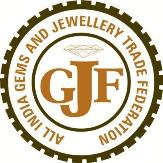
Mumbai: India’s Finance Minister’s focus for Union Budget 2016-17 was macro-economic stability and fiscal discipline as part of the transformational agenda. It was presented against the backdrop of challenging global headwinds while taking into account India’s status as a bright spot of 7.5%+ growth in a slowing global economy. There are several positive takeaways from the Union Budget and yet some areas that need to be addressed with respect to the gems & jewellery sector.
Positives:
There are several positives in the Union Budget for various industry constituents including the focus on socio-economic development, impetus to infrastructure, simplification of tax norms and rationalization of Central Government schemes.
GJEPC welcomes the Inclusion of Separate HS Code for Lab grown diamonds and a separate one for the Natural Diamonds. This is a great step towards curbing the mixing of lab grown with natural diamonds and thereby creating a fair trade environment with defined verticals for both.
A “Special Notified Zone” (SNZ) had been created to facilitate shifting of operations by foreign mining companies (FMC) to India and to permit the trading of rough diamonds in India by the leading diamond mining companies of the world. GJEPC acknowledges the step of incorporating the FMCs to undertake activity of display of uncut diamond (without any sorting or sale) in the special notified, however industry urges the government to permit the sale of rough diamonds at the SNZ by implementing 0.25% tax on sales turnover achieved at SNZ by Foreign Mining Companies.
Finance Minister’s proposal to reduce the rate of Corporate Tax from 30% to 25% over a period, accompanied by rationalization and removal of various tax exemptions and incentives is a welcome move. The proposal to lower the corporate income tax rate for the next financial year of relatively small enterprises; i.e., companies with turnover not exceeding Rs. 5 crore (in the financial year ending March 2015), to 29% plus surcharge and cess will hugely benefit the gems & jewellery sector and new startups will also benefit from this.
The proposal to amend section 10AA of the Income-tax Act to provide for a sunset date of 31.03.2020 for commencement of activity of manufacture or production of any article or thing or providing services by a unit located in a Special Economic Zone (SEZs) for availing the deduction under said section provides clarity. We are happy to see a definitive roadmap as all units can plan for 5 years.
The deductions available for augmenting infrastructure as part of Make in India are also a welcome move. The intent to set up world-class multi-skill training institutes and entrepreneurship education is good and tax deductions under Skill India will be of great help. The proposal to circulate a Model Shops and Establishments Bill which can be adopted by the State Governments on voluntary basis is also positive.
As part of the move towards a lower tax regime with non-litigious approach, the new Dispute Resolution Scheme (DRS) is a welcome measure.
Areas of Gem & Jewellery Sector:
Gem & Jewellery Industry had made several representations to the Government to facilitate Ease of Doing Business in the Sector. We are distressed to find in the case of the gems & jewellery sector, no specific attention has been paid to address ease of doing business considering that exports of gems & jewellery account for a major share in the world market. We expected that the Government would announce measures to facilitate the export-oriented industries and create an environment of ease of doing business.
We find that our existing concerns have not been addressed in this Budget. We are apprehensive of the introduction of excise duty on jewellery products for the first time in several decades.
In India, jewellery is largely produced by the SMEs and they are not equipped to follow the rigid compliance of excise norms. The imposition of excise would severely impact jewellery production in India resulting in loss of employment to the uneducated but skilled jewellery workers.
In the past, successive Governments have considered this and not levied excise on jewellery. We would strongly urge the Hon. Finance Minister to reconsider the withdrawal of levy of excise on jewellery products. Government may consider inclusion of the Excise in the forthcoming GST regime.
GJEPC will continue to engage with the government on key issues and challenges faced by the Industry.
Disappointing Union Budget: GJF
 Mumbai: All India Gems and Jewellery Trade Federation (GJF) has expressed its disappointment over the Government’s inaction in budget proposals to address various issues related to gems and jewellery sector.
Mumbai: All India Gems and Jewellery Trade Federation (GJF) has expressed its disappointment over the Government’s inaction in budget proposals to address various issues related to gems and jewellery sector.
Mr. G V Sreedhar, GJF Chairman, said “Our hopes are belied as the government has ignored the gems and jewellery sector from fiscal incentives and has imposed excise duty of 1% without input credit or 12.5% excise with input credit. This will create further trouble for jewellery manufacturers, who have been incurring losses in their business transactions, due to recently introduced PAN card norm”.
Mr. Ashok Minawala, GJF Director, said, “How can excise be applied to 80% unorganized sector of Gems & Jewellery? We are let down by the budget proposals as Govt. has failed to address many critical issues hindering the growth of the sector. It is very surprising that a progressive government has ignored this sector, when it had earlier declared it as a thrust area for job creation through Make in India initiative and export promotion. Industry will collapse with such policies”.
In its budget proposals, Finance Minister Arun Jaitley has proposed Excise duty of ‘1% without input tax credit or 12.5% with input tax credit’ on articles of jewellery (excluding silver jewellery, other than studded with diamonds and some other precious stones), with a higher exemption and eligibility limits of Rs 6 crores and Rs 12 crores respectively.
Earlier in 2005 & 2012, Government had introduced the excise duty on Gems & Jewellery industry, which was however rolled back just within few days of its inception, after acknowledging the impracticality of this rule and its application to a very large unorganized sector of the industry.
In 2012, the industry had registered a nationwide 23 days protest by way of ‘Bandh’, wherein the present ruling party had infact given their support and GJF has expressed it’s surprised over the U-Turn by this Government.
Broadly, It’s a Positive Budget: WGC
 Mumbai: “At a broader level, the budget is positive as it focuses particularly on the farm sector and the rural economy, the primary drivers of gold demand. A doubling of rural incomes by 2022 would provide a significant opportunity, as gold remains a preferred option for wealth preservation and will remain so amongst millions of people,” Mr. Somasundaram PR, MD of the World Gold Council (WGC) said.
Mumbai: “At a broader level, the budget is positive as it focuses particularly on the farm sector and the rural economy, the primary drivers of gold demand. A doubling of rural incomes by 2022 would provide a significant opportunity, as gold remains a preferred option for wealth preservation and will remain so amongst millions of people,” Mr. Somasundaram PR, MD of the World Gold Council (WGC) said.
“The introduction of the three landmark Gold Schemes launched last year, illustrated this Government’s acknowledgement of the economic strength of gold as part of household savings and therefore, the need to integrate it with mainstream financial savings. The steps announced in this budget on tax transparency to end some of the legacy issues could also increase the success of the gold schemes,” he added.
Expressing his concerns, Mr. Somasundaram said, “However, the reintroduction of a 1% excise duty on the manufacture of jewellery is inconsistent when we consider one of the main pillars on which the budget is drawn, i.e., governance and ease of doing business. This duty will make jewellery buying more expensive and could lead to irregular business practices. It will also add a significant compliance burden onto an industry already weighed down by a huge burden of customs duty and VAT. Gold is essentially a savings instrument and savings should not be taxed, they should be tapped. A new type of tax at this juncture runs counter to the direction the gold industry was heading and against the long term benefits the industry would bring to the economy.”
“Additionally increasing the duty on gold dore could hinder growth of the nascent domestic gold refining industry. We believe it is necessary to chart a long term policy on all aspects of gold, understanding and acknowledging the huge value it brings in both social and economic terms,” he added.



